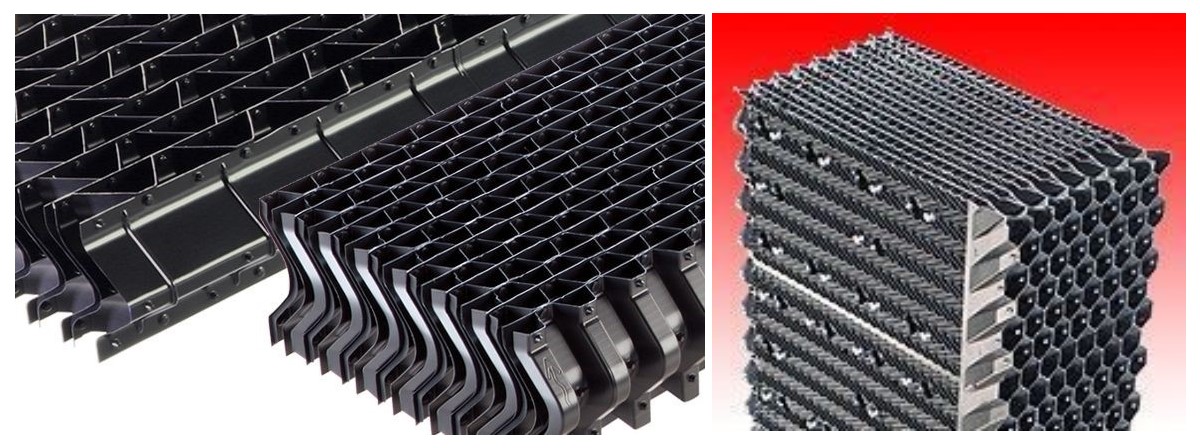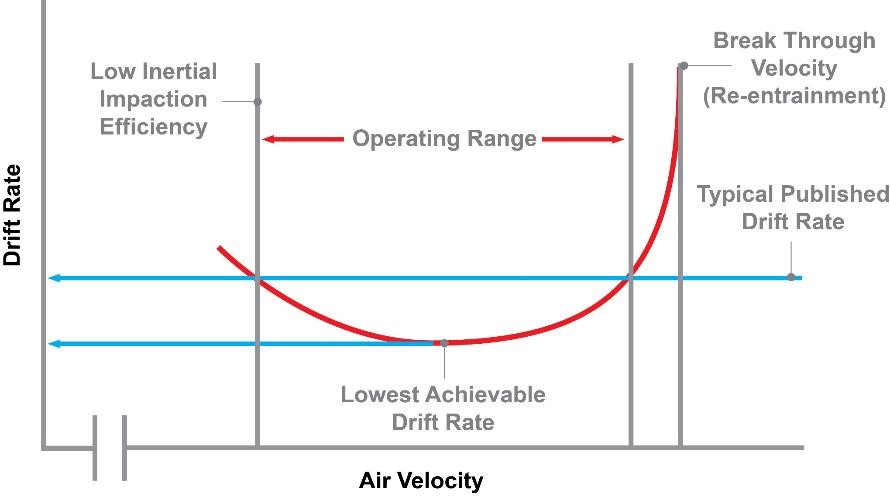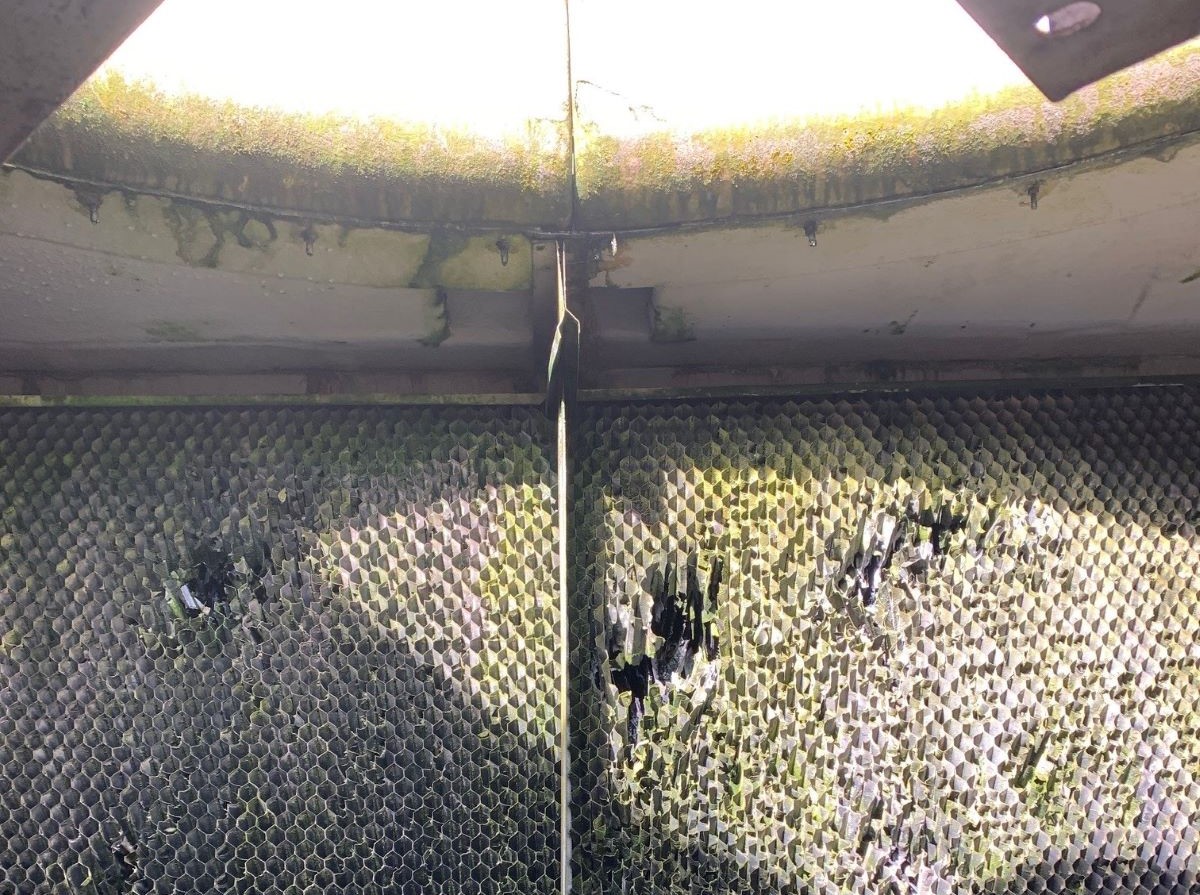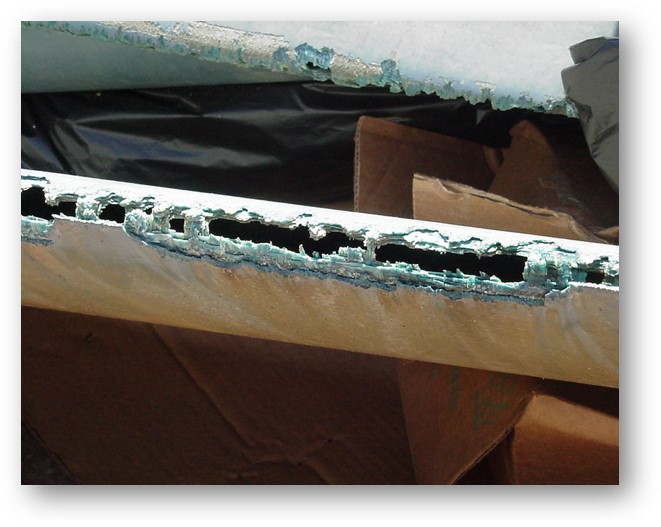News
New thresholds for drift eliminator programme
By Mr Ian BUTLER, Drift Eliminator & Cooling Tower Certification Programme Manager
Eurovent Certita Certification is very pleased to announce the modification of its drift rate certified performance thresholds. This is in recognition of world-wide drift rate industry standards and incentive schemes, i.e. LEED green building rating system, Spanish UNE100030:2017, French norm NF E 38-424, and several other world-wide geographic regions for; Counterflow, Crossflow integrated & Non-integrated drift eliminator types.
Guaranteeing the Drift eliminator effectiveness rate (percentage) of a Cooling Tower or Drift Eliminator product is becoming an increasing requirement not only in Europe, but also world-wide. Prior to this update to the Technical Certification Rules (TCR) ECP-14-DE 2023, the certified drift performance had been declared to meet a 0.01% drift rate @average airflow rate conditions between 3.0 – 3.5m/s. However, now Eurovent together with industry experts, have reviewed the importance of certifying reduced drift rates with certainty, and have revised its certification standard to reflect the increasing industry demand of a 0.002% drift rate at declared average air velocity conditions (see diagram 2).
Controlled laboratory testing is conducted at a newly developed 4JTECH testing laboratory facility located in Prague, Czech Republic, together with USA based McHale Associates Inc. a Cooling Technology Institute (CTI) licenced testing agency for drift eliminator testing. Testing uses the Eurovent certified performance test standard ECP-14-DE for laboratory drift testing, utilising the Isokinetic drift test code ATC-140.

Picture 1 - Some drift eliminator types: Counterflow Cellular & Crossflow integrated.
So what is Drift?
Drift, is the undesirable loss of liquid water to the environment via small droplets that become entrained in the leaving air stream of an evaporative heat rejection product i.e. Cooling Tower. There, water droplets carry with them chemicals and minerals, thus impacting the surrounding environment.
Drift is not to be confused with plume, which is the cloud or mist-like result of the evaporation process, commonly seen being emitted from such cooling towers. While plume is condensing water vapor from evaporation, drift is actual droplets, and these droplets contain the chemicals and solids that are present within the circulating water.
What is the definition of drift rate?
Drift rate is the proportion of the drift volumetric flow rate to the circulating water flow rate entrained in the airflow, and exiting at the discharge of the eliminator, expressed as a percentage.
How is it calculated based on known circulating flow rates & published drift rate?
Here is a cooling tower (example) with the drift eliminator published drift rate data of 0.002% & circulating water flow: 3,790Litre/Min. (l/min.).
Since we know that this percentage is in relation to the circulating flow rate, we can calculate the volume of water exiting out of the tower in the form of drift droplets, or drift loss:
- Drift loss (l/min.) = 3,790 l/min. x (0.002/100) = 0.0758 l/min.
- Expressed over an hour period: 0.0758 l/min. x 60 min./hr = 4.548 l/hr
If we substitute another product’s drift rating of 0.01%, we would get a drift loss of 22.74 l/hr or over 4 TIMES GREATER drift loss.
How does a drift eliminator work?

Drift eliminators aid in the removal of water droplets from an airstream in a cooling tower. They work by changing the direction of the airflow and causing the entrained water droplets to impact the walls of the eliminator (inertial impaction). When this happens, the droplets are removed from the airstream and run along the walls to drain back into the wet section of the tower.
There is usually some form of tortuous path mechanism, depending on level of drift rate required. It should be recognised that the more tortuous path may incur higher pressure drops through the drift eliminator, and therefore more motor power used by the air movement fan.

Diagram 2 - The operational range as you see in the diagram above is where we want to be for the drift eliminator to work most effectively and meet its published drift rating. For the Eurovent certification programme for counterflow the average of 2 tests at 3.5 m/s air flow are considered and for cross-flow 2 tests x 3.0 m/s are considered for certification drift % ratings. Eurovent also publishes the air velocity at which breakthrough is established under test conditions.
Definition of Break-through Air Velocity: Three stages can be observed: first, small droplets leave the DE then fall back down almost immediately; second, the small droplets float above the DE without leaving, then third, droplets are carried away by the airflow and leave the DE. The breakthrough velocity corresponds to the beginning of the third stage and is expressed in m/s.
Why should drift be eliminated?
There are several reasons why eliminating drift is important:
- Health and safety: A cooling tower’s circulating water can be expelled through drift, so any dirt, debris, or bacteria that is within the water is also going to be dispersed along with the drift. At the forefront of these health concerns is Legionella, which is a respiratory infection that strikes individuals exposed to the Legionella bacteria. An individual could inhale droplets containing the bacteria, and they are small enough to be deposited deep within the lungs. This is especially a concern in big cities where towers are often installed atop of buildings.
- Fan blade erosion & internal unit corrosion: Fan tips can see speeds up to 56 meters per second, and the impact of the water droplets on the leading edge of the fans can be detrimental to the performance and the lifecycle of the fan. Erosion of the fan stack would have a huge impact on the efficiency of the fan assembly, and fan support structures could become eroded (unsafe) as seen in picture 3 and collapse inside the cooling tower.
Pictures above show significant erosion and corrosion within a cooling tower above the drift eliminator, especially when a very poor rated % drift has been installed or damage to the drift has occurred.
- Nearby equipment impacts: Drift can create a nuisance for surrounding areas within the drift spray radius. This can lead to accelerated corrosion of nearby equipment as well as spotting on cars, windows, and buildings.

Pictures above show examples of nuisance drift corrosion. Would you want to leave your nice new car close to a cooling tower with very poor drift % rates?
- Water loss: As we have seen in the example within this article reducing drift will also help to reduce unnecessary water loss from a cooling system. Required makeup for a cooling tower is a combination of the water loss from evaporation, blow down, and drift. So, reducing drift also helps to reduce your make up.
- PM10 emissions: The particulate matter that is contained within a drift droplet is left behind once the water that forms the droplet evaporates, possibly qualifying as a PM10 emission. While only one factor of a complex equation, reducing drift rate can also help reduce your tower’s regulated emissions.
Eurovent Certita Certification is a World leader in third-party certification, operating in the fields of Heating, Ventilation, Air conditioning and Refrigeration (HVAC&R), meeting the needs and requirements of an evolving industry in the residential, commercial, or industrial markets. Its historic certification mark, Eurovent Certified Performance, is well recognized around the world, with an international accreditation to ISO17065 the standard for Certification bodies.
Mr. Ian Butler is currently in the process of arranging the 2024 test campaign and therefore if you have any Drift Eliminator or Cooling Tower certification and testing needs, then please do contact him directly. Alternatively, you can hit the Apply Now button below to find out more about our certification programmes.





